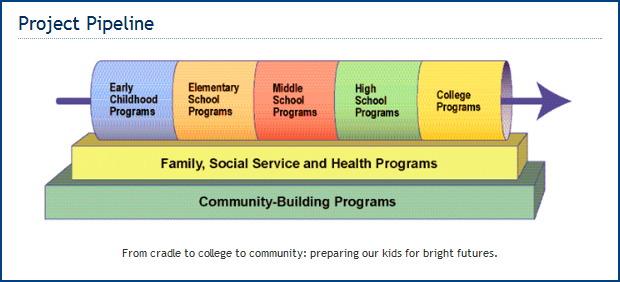Diane Ravitch, a writer for The New York Review of Books embodies the sentiments of those who feel charter schools can't be a all-in-one solution for education reform. She and others argue that Davis Guggenheim's Waiting for Superman is an oversimplification of what's wrong with the current system.
"At last we have the culprit on which we can pin our anger, our palpable sense that something is very wrong with our society, that we are on the wrong track, and that America is losing the race for global dominance. It is not globalization or deindustrialization or poverty or our coarse popular culture or predatory financial practices that bear responsibility: it’s the public schools, their teachers, and their unions."
In Waiting for Superman, charter schools are portrayed as the answer to failing public schools, but is that really true? In 2009 results from a Stanford University study were released that found, when compared to traditional public schools:
- Only 17% of charter schools performed significantly better (less than 1 in 5 charter schools)
- 37% of charters performed worse
- 46% showed no different in their performance
Guggenheim focuses heavily on Geoffry Canada's success with the Harlem Children's Zone as the example of a successful charter school, and rightfully so. That success is clear cut. In almost every respect students at HCZ are performing above state averages. However, Guggenheim chooses to cling to the idea that charter schools like HCZ are successful because they're mostly free from teacher unions and can fire teachers that aren't up to snuff.
Geoffry Canada is an advocate for the ability to fire poor performing teachers. He's not afraid to share his opinion that "some teachers just can't teach" and "when you see a great teacher you're seeing a work of art." Throughout the documentary segments of an interview with Canada are shown that portray these sentiments in support of a charter school's freedom to manage its staff. This narrow focus on whether or not schools can fire bad teachers as the cause for a failing education system is not fair to the viewer. This idea becomes the scapegoat and ignores the many other issues that are part of the cultural fabric of urban areas like Harlem.
Canada expects their teachers to consistently perform at a level of excellence, but he also understands that excellent teachers are just part of the solution. All teachers in inner city classrooms face crime, poverty, substance abuse, and the challenges that come with dysfunctional and single parent families.
HCZ teachers are teaching kids that face these challenges, too. The difference is Canada's solution wasn't solely to create charter schools where he can fire teachers who aren't up to snuff. What isn't shown in Waiting for Superman is that HCZ created a "project pipeline," charter schools surrounded by an institutional support structure that, according to author of Whatever it Takes, Paul Tough, is "designed to mimic the often-invisible cocoon of support and nurturance that follows middle-class and upper-middle-class kids through their childhood." This cocoon includes services like access to quality family and social services, health and community building programs that provide teacher support.
Let's take a quick look at inner city public schools that have found a way to create a similar support system. Turnaround for Children, Inc. is an organization in New York that works with public schools, as well as the 4 in 5 failing charter schools, to help them reorganize from the inside out and make them productive learning environments. To do this they work with schools in many ways. How?
- Servicesbuilding internal school capacity to address mental health and behavioral challenges and linkages to community social services:
- School-based counseling and support
- Pathways to a community-based mental health partner
- Family engagement ahd education
- Skills providing outcome-driven professional development for all school staff, for example:
- Strategic classroom organization
- Proactive classroom management
- Knowledge of social-emotional and behavioral development in children
By providing social support and counciling, Turnaround for Kids, Inc. has found success. Schools became calmer and safer:
- 51% decrease in police-reported incidences
- 32% decrease in suspensions
Which also had an effect on teacher performance:
- 77% decline in teacher turnover
- 34% decrease in teacher absences
Over a three to four year intervention period ending in 2009, students in Turnaround for Children’s New York City partner schools showed notable academic gains, as shown by the percentage of students demonstrating at or above grade-level proficiency.
- Math: Students’ math proficiency scores increased from 49 to 82% at the elementary level; and from 24 to 64% at the middle school level.
- English Language Arts: Students’ ELA proficiency scores increased from 47 to 57% at the elementary level; and from 27 to 49% at the middle school level.
So, reader, what do you think? Is the real question of education reform as simple as saying teachers are the problem, public shcools are inadequate and charters are the answer? Contribute your thoughts to our discussion board.



No comments:
Post a Comment